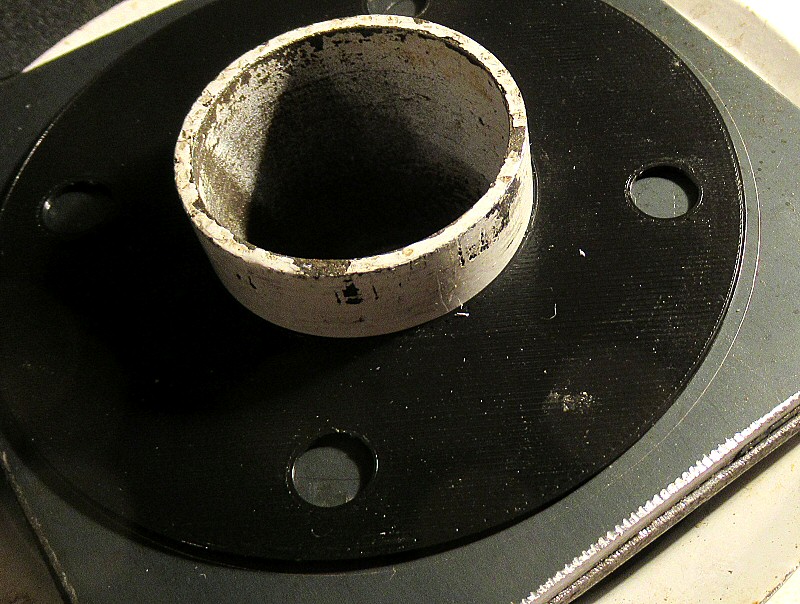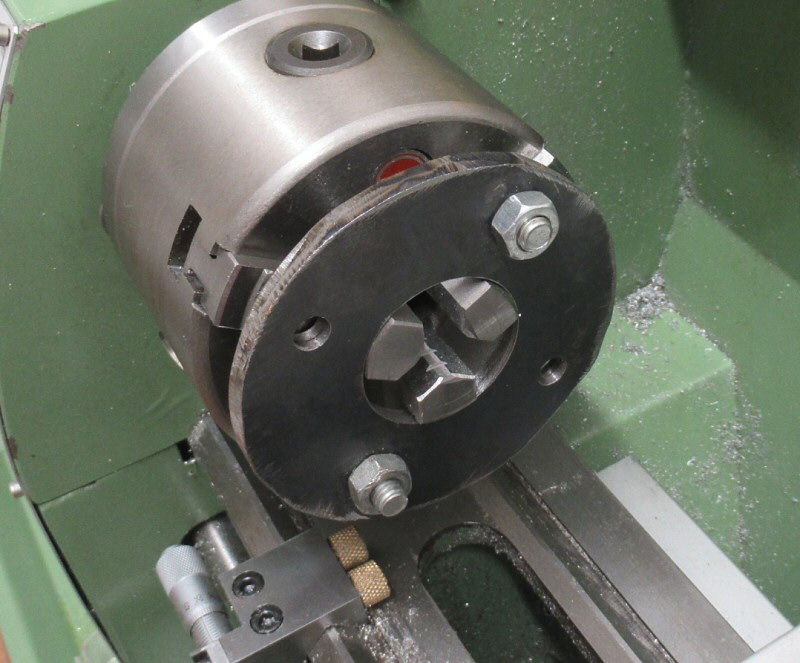Hole saws are not intended to be precise. Typically they are building tools used for pipe and conduit ways, drilling water-tanks for their fittings and the like.
Nevertheless they are a valid way to rough out the work provided you select a size that leaves sufficient machining allowance, and I use them fairly frequently for that.
You say your pillar-drill (or bench-drill? They do differ!) is not concentric. Are you sure? A hole saw can give that impression depending on its type, even though its holder's pilot-drill acts as a guide. You can't hope to use a hole saw without that pilot, so it won't enlarge an existing hole without some preparatory work.
.
Looking back at other's suggestions, I would start with an octagon or "more-agon", but round the corners off a bit first with a file or angle-grinder, as turning down from sharp corners can be a bit fraught.
.
Trepanning can work well provided you can hold the work on both sides of the cut.
This is based on how I machined large rings from 1/2" thick steel plate:
If the work has holes in it, as here, I would drill them and use them to hold the plate to a faceplate with intervening spacers or a scrap of plywood. I would also drill holes in the outer (off-cut) area for further holding. This is so the cut completes without great lumps of steel with razor-sharp burrs suddenly breaking free and possibly causing havoc
The tool shape needs careful thought if it is not to bind. My approach is to start the cut well on the scrap side, in a little way, withdraw the tool and offset it slightly to widen the cut. Take it slow and steady, alternating the trench diameter to give clearance.
Finally unscrew the off-cut from the faceplate and finish-turn the diameter.
.
Can this piece be made on a rotary-table and vertical mill? Yes. a ring of bolt-holes concentric with the finished diameters is basic rotary-table work, if the number of holes is a factor of 360º. It normally is!
You can mill the entire component in this way. Set out and drill some holding-screw holes in the off-cut areas (leave room for the heads!) to secure the plate to the table by Tee-nuts. Use a sacrificial plate or spacers as with the lathe faceplate.
Centre the rotary-table under the spindle and set the axis (usually the long one) dial or the DRO if so fitted to 0. Turn the RT to 0º.
Fit the work-piece and spacer(s) to the table.
Now you can drill the component bolt-holes and trepan the ring out by using a slot-drill, with due regard to cut depth for cutter diameter. It's a slow and rather tedious process with large diameters, on a manually-driven rotary-table, but effective.
.
Incidentally, if you ever need set out a ring of 4 equi-spaced holes by co-ordinates, or relate a square's diagonal to a diameter, the diameter of a square's circumscribing circle is 1.414 X Diagonal. (Square root of 2 – derived from Pythagoras' Theorem.)
Other polygons and their formulae are available!
Edited By Nigel Graham 2 on 19/06/2023 23:34:01
 JasonB.
JasonB.






